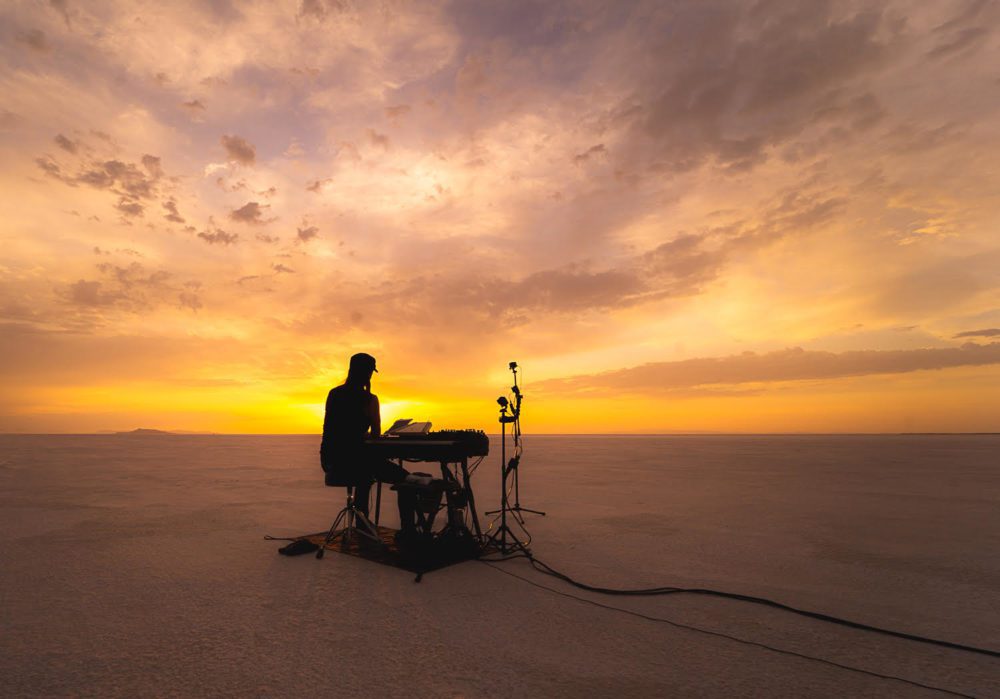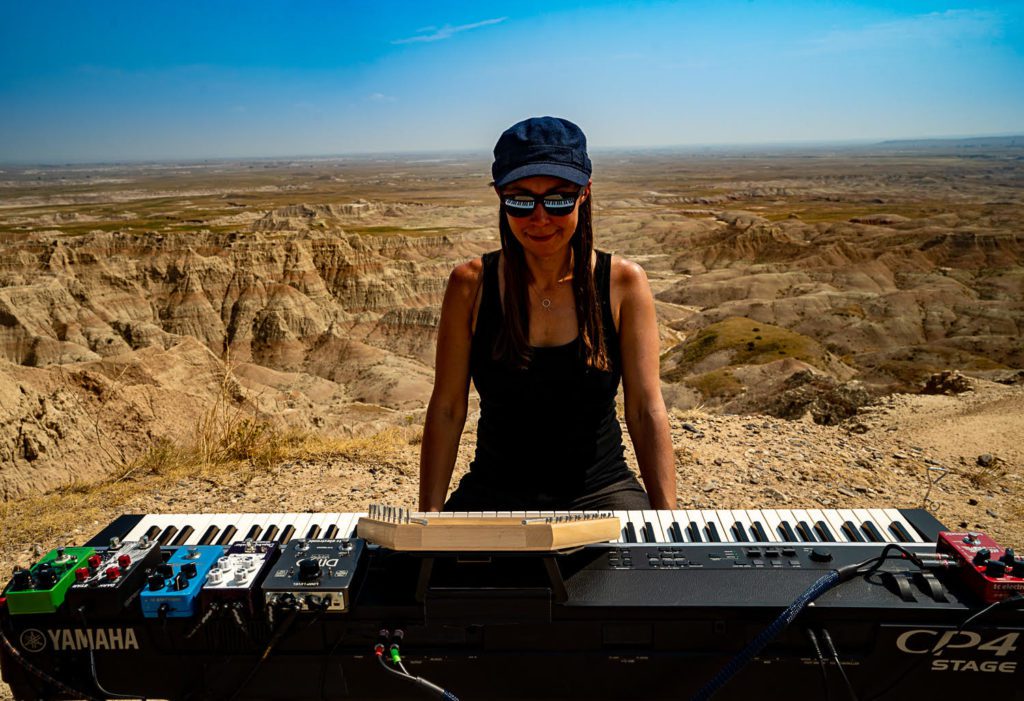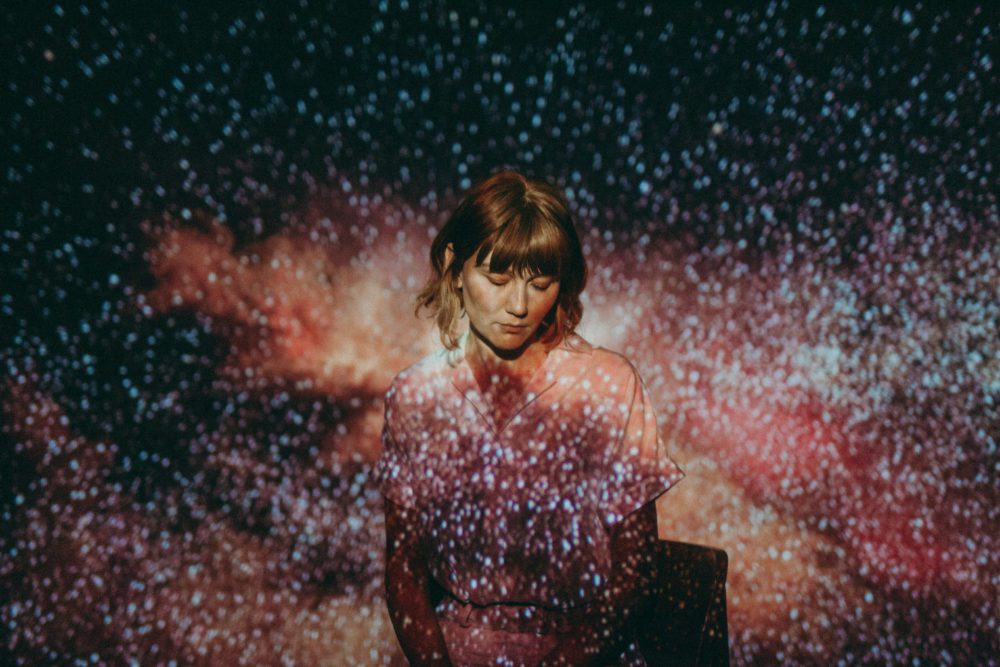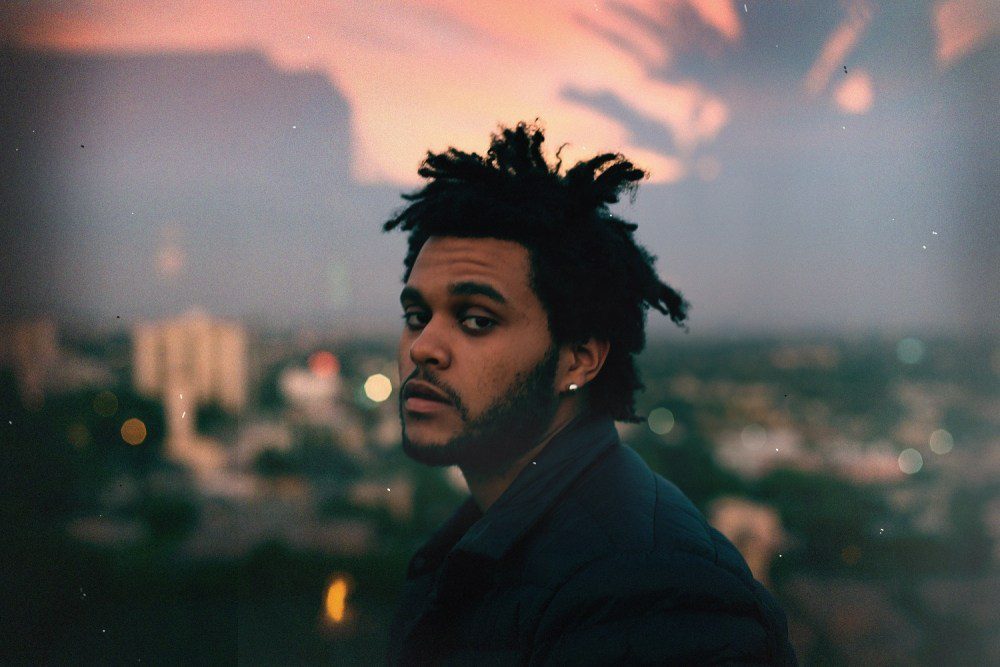

It’s hard to imagine the unstructured, genre-spanning ecstasy of the Grateful Dead translating well to solo piano. But if anyone was going to do it, it’s San Francisco-based Holly Bowling. Bowling, who started playing piano at age five, remembers a childhood steeped in equal parts jam bands and legendary composers. “My parents brought me up listening to the Dead and Little Feat, a bunch of stuff like that. They also had Mozart, Beethoven, Chopin, Debussy, all kinds of classical music. I have this weird dichotomy,” she says.
This dichotomy stayed with her through college, where she majored in piano performance but ducked out of class to catch Phish shows. Bowling still uses the meticulous arranging skills from her classical pedagogy, now counterbalanced with a love of improvisations. She now has two full-length records of Grateful Dead adaptations, 2016’s Better Left Unsung and a release forthcoming this fall, Seeking All That’s Still Unsung. Recently, the pianist embarked on the Wilderness Sessions, a cross-country tour featuring outdoor locations from Yosemite to Utah’s salt flats to the Badlands, bringing the Dead to life at every stop.
As Bowling grew into adulthood and began playing the band’s music, she felt her appreciation for their range and spontaneity deepen. “It’s a huge catalog that spans a lot of years. There’s a raw element to the early stuff that I absolutely love, along with the really delicate beauty of the Garcia/Hunter ballads. I also just love the spirit that band had from day one, never doing the same thing the same way twice,” says Bowling, who also released Distillation of a Dream, an album of Phish covers, in 2013.
“The music that feels the most like me is when I take the techniques I learned in classical music and apply them to improvisational music,” the composer says. “I will spend hours creating charts for where the vocals would be. I’m meticulous about that. I think about how I can best give a song an arc when I rip the story away from it. The flip side of that is that there’s usually a launching off point in the song where I go from the stuff that’s extremely scripted and then it shifts to ‘I have no idea what’s going to happen next.’” Listening to her music, it’s not always easy to tell what was planned and what arose in the moment.
Bowling’s first album of Grateful Dead Covers, Better Left Unsung, was recorded live, where many of her adaptations found their genesis. Taking Seeking All That’s Still Unsung into the studio meant losing the energy of the crowd—a feat she’d replicate during the COVID-inspired Wilderness Sessions tour. Fortunately, the pianist loves a challenge. She considered what she could do in a studio that wouldn’t be possible live. “I experimented with overdubbing myself playing to respond to myself. I was inspired by the Bill Evans album Conversations with Myself,” Bowling says, referring to a landmark 1963 jazz album. On Seeking All That’s Still Unsung, Bowling blends romantic arpeggios, jazzy syncopation, and jubilant pop—often within the same song. Her renditions are masterful and accessible enough that Deadheads and neophytes alike will take pleasure in the songs’ complex unfolding.

Just as Bowling made the most of the recording environment, she’s learned to appreciate the variety of obstacles she’s encountered during the aptly-named Wilderness Sessions. While planning the tour, she thought about how to incorporate diversity with just the right amount of adventure. “We wanted to pick things that were varied, not sets that were all on mountaintops. We also wanted a balance of the familiar and unknown,” she explains. “Yosemite is close to my heart and close to where I live. It’s familiar and it’s amazing, but it didn’t have the feeling of pushing me out of the edge. Some of the other sites I’d never been to and didn’t know what to expect until the sun came up. That feeling plays into how the music goes.”
In the performance from Lake Tahoe, Bowling looks perfectly relaxed. She sits at her keyboard in flip flops and sunglasses, her dog at her feet while the expanse of the Sierra Nevadas and the lake itself sprawl behind her. Channeling her surroundings into her performance, she’s clearly in her own flow state. “Once I started working with the place instead of against it, the whole thing got much more fun,” she says, noting that the curveballs at her concerts are quite different from playing “when you’re on the edge of a canyon and sand is smashing into your face!”
Playing shows at outdoor locations Bowling had never visited has proven to be the ultimate test of planning meeting uncertainty, especially when she played at the Utah Salt Flats. “It’s crazy hot so we wanted to do it at sunrise, so we went out there at 3:30 AM. Driving out there, there’s no one there, it’s crazy windy, no signs of life. I’ve never seen a darkness like that. We almost didn’t do it,” the pianist says. “We did it and it was just incredible. It felt like it was an example of the place working into my playing. The wind was playing the strings on the little harp I have on top of my keyboard. Part of the point of this was to find inspiration elsewhere since I was missing the exchange between audience and performer, and missing the adventure of being out on the road. The salt flats were the perfect example of what I wanted coming to fruition.”
As Bowling makes her way back across the country, she’ll be bringing plenty of Grateful Dead songs with her. But, like her favorite band, she’ll never play these songs the same way twice. And, even if she wanted to, the wind and sand wouldn’t allow it anyway.
Follow Holly Bowling on Facebook for ongoing updates and check out the remaining dates of her Wilderness Sessions Tour below.
9/24 – Bruneau Canyon, Idaho
10/1 – Beartooth Mountains, Wyoming
10/8 – Badlands, South Dakota



